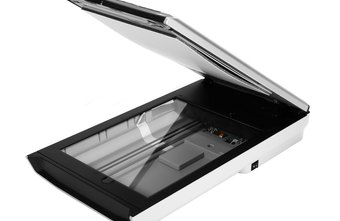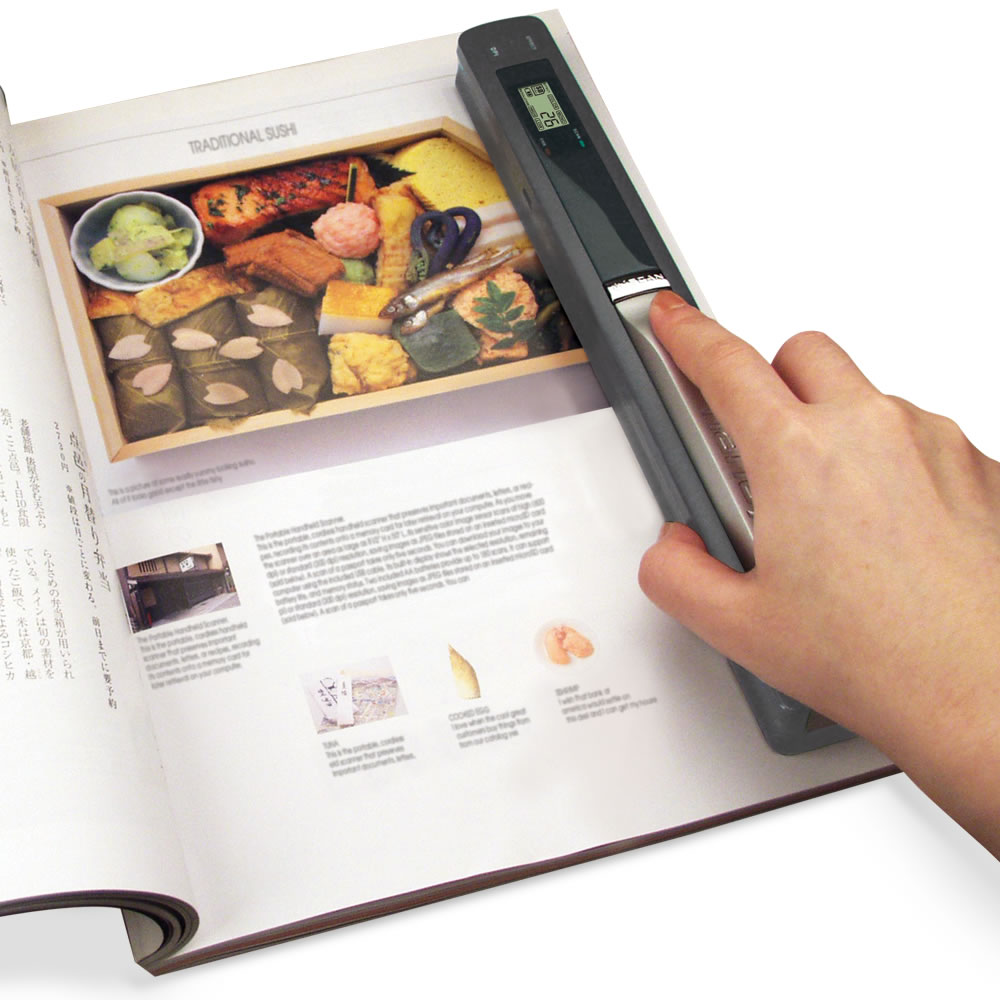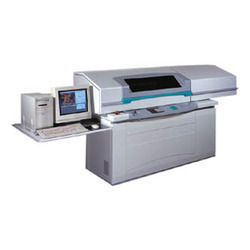The
printer is a device that prints text documents and images on paper means
converts a soft copy to a hard copy. It is known as output device.
Printers are classified in two groups:
Impact
Printers
It is
used to printing document as well as graphics. It refers to a class
of printers that work by banging a head or needle against an ink
ribbon to make a mark on the paper. The working of impact printer is very
similar to that of the typewriter. This includes dot-matrix
printers, daisy-wheel printers, and line printers.
Dot
Matrix Printer
A type
of printer that produces characters and illustrations by
striking pins against an ink ribbon to print closely
spaced dots in the appropriate shape. Dot-matrix printers are
relatively expensive and do not produce high-quality output. However, they
can print to multi-page forms (that is, carbon copies), something laser and
ink-jet printers cannot do.
Dot-matrix
printers vary in two important characteristics:
Speed: Given in characters
per second (cps), the speed can vary from about 50 to over 500 cps. Most
dot-matrix printers offer different speeds depending on the quality of print
desired.
Print quality: Determined by the number of
pins (the mechanisms that print the dots), it can vary from 9 to 24. The best
dot-matrix printers (24 pins) can produce near letter-quality type, although
you can still see a difference if you look closely. It is connected with the
parallel (LPT) or serial or USB port of the system. There are two types of DMP
(Dot-matrix printers) depending upon size i.e. 80 column and 132 column.
Daisy-wheel Printer
A type
of printer that produces letter-quality type and working on the same
principle as a ball-head typewriter work. The daisy wheel is
a disk made of plastic or metal on which characters stand out in
relief along the outer edge. To print a character, the printer rotates the disk
until the desired letter is facing the paper. Then a hammer strikes the disk,
forcing the character to hit an ink ribbon, leaving an impression of the
character on the paper. You can change the daisy wheel to print
different fonts.
Daisy-wheel
printers cannot print graphics, and in general they are noisy and slow,
printing from 10 to about 75 characters per second. As the price
of laser and ink-jet printers has declined, and the quality
of dot-matrix printers has improved, daisy-wheel printers have become
obsolete.
Line Printer
A
high-speed printer capable
of printing an entire line at one time. A fast line printer can print as many
as 3,000 lines per minute. The disadvantages of line printers are that they
cannot print graphics,
the print quality is low, and they are very noisy.
Non-impact
Printers
The non-impact
printers are characterized by a quiet operation as physical contact is not
established between print head, cartridge and media (paper). Inkjet, laser and
thermal printers are types of non-impact printers.
Ink-jet Printer
An
inkjet printers places extremely minute amounts of electrically charged ink on
paper to create images or text. The drops of ink are sprayed through a series
of nozzles. These drops are around 0.6 microns in diameter and are positioned
with very high precision. Inkjet printers use color as well as monochrome
cartridges. It provides high quality printing and cost of printing is also
high. It can connect through parallel (LPT) or USB port or wireless to the
system. A typical ink-jet printer provides a resolution of 300 dots per inch,
although some newer models offer higher resolutions. It is also known as
Desk-jet Printer.
Laser Printer
A type
of printer that utilizes a laser beam to produce an image on a drum. The light
of the laser alters the electrical charge on the drum wherever it hits. The
drum is then rolled through a reservoir of toner, which is picked up by the
charged portions of the drum. Finally, the toner is transferred to the paper
through a combination of heat and pressure. This is also the way copy machines
work.
There
are two other types of page printers that fall under the category of laser
printers even though they do not use lasers at all. One uses an array of LEDs
to expose the drum, and the other uses LCDs. Once the drum is charged, however,
they both operate like a real laser printer. The available resolutions range
from 300 dpi at the low end to 1,200 dpi at the high end. By comparison, offset
printing usually prints at 1,200 or 2,400 dpi. Some laser printers achieve
higher resolutions with special techniques known generally as resolution
enhancement. You can add additional fonts in one of two ways:
In
addition to text, laser printers are very adept at printing graphics. However,
you need significant amounts of memory in the printer to print high-resolution
graphics. To print a full-page graphic at 300 dpi, for example, you need at
least 1 MB (megabyte) of printer RAM. For a 600-dpi graphic, you need at least
4 MB RAM.
The
speed of laser printers ranges from about 4 to 20 pages of text per minute
(ppm). A typical rate of 6 ppm is equivalent to about 40 characters per second
(cps).
Thermal Printer
A
thermal printer is a printer that makes use of heat in order to produce the
image on paper. Due to quality of print, speed, and technological advances it
has become increasingly popular and is mostly used in airline, banking,
entertainment, retail, grocery, and healthcare industries. Thermal printing
does not make use of ink or toner unlike many other printing forms but largely
depends on thermal papers for producing the images. They are also quiet popular
in creating labels owing to speed of printing.
Advantages of Thermal Printers:
No involvement of cartridges or ribbons and thus organizations can save
investment by using thermal printers.
Easier
to use as there are less buttons and use of software involved.
Popular
in noise-free environments and are great for offices.
Largely
inexpensive and come in various models and sizes.
More
efficient and faster in printing monochromatic ones compared to other forms of
printing.
More
durable compared to other printers.
Disadvantages of Thermal Printers:
Unlike
standard printers, thermal printers usually do not print out colors well.
If they
become too heated to operate, the ink consumed would be more and the printing
may not be precise.
Print
head could be harmed by the high heat used while printing, often resulting on
cost to repair when it break down.
All-in-one Printers
An
all-in-one printer is a device made up of multiple peripheral functionalities
and capabilities, including printing, copying and scanning. All-in-one printers
provide centralized document management for large and small enterprises.
Manufacturer’s segment all-in-one printers by page-per-minute (PPM) speed, and
cost varies by output quality and usage.
All-in-one printers include one
or more of the following features and components:
Printing,
Copying, Scanning, Faxing, Stapling, Duplexing, Hole punching, Color and/or
black and white printer compatibility, Extra paper trays, Photo organization
software, Optical character recognition (OCR) software.
USB or parallel port all-in-one
printer types are as follows:
Small Office, Home Office (SOHO): Small units with print, copy,
scan and fax functionality, basic finishing (stapling, duplexing, hole
punching) and USB connections.
Office: Mid-sized units that serve as
centrally networked office systems with integrated security, full features,
document storage, advanced finishing (stapling, hole punching, offset mode),
custom software and advanced network scanning, including email, Server Message
Block (SMB), Network File System (NFS) and File Transfer Protocol (FTP).
Production: Large and expensive units with
high-quality output and advanced finishing. Serve as centrally located network
printers that may not include advanced functionalities and also may be known as
print on demand (POD) or digital presses.
All-in-one printers also have
basic input/output (I/O) features:
Input: Built with network drivers for
different operating systems, page description languages, parallel
connection/printing types, direct interpreters and USBs.
Output: Built with printing
speed/technology, paper formats, dot-per-inch (DPI) resolution and duplex and
direct printing.
Troubleshooting Dot Matrix Printers
Trouble: Paper is Jammed/Stuck.
Shoot:
Try to dislodge
the paper with a small object like a paper clip.
Remove
the roller of the printer then remove the paper.
Check
paper path and clean it.
Use a
bulb chamber to heat up the paper before using it.
Trouble: Prints nonsensical/junk
characters.
Shoot: Check the printer driver to see
if it is proper one for printer.
A loose
or faulty printer cable can cause improper printing. Try printing a document
after replacing the interface cable.
Try the
printer self –test. If the printer fails the self test, then the printer may be
faulty.
Check
the parallel port setting (e.g. EPP,ECP or SPP) and USB setting from the BIOS.
Trouble: Printer displays flashing lights
Shoot:
Flashing lights
can indicates one of many problems. Flashing lights as a signal to indicate
some internal problem. It could be a paper jam or a damage logic card. Each
patterns of flashing lights indicates a different problem to find out the cause
of the flashing lights use printer manual.
Troubleshooting Inkjet Printers
Trouble: Printouts from the printer are
blank
Shoot:
Check if the
plastic cover has been removed from the ink cartridge.
There
may be air entrapment inside the cartridge. To undo any such fault, cover the
cartridge in a tissue and shake it gently.
Try
printing with another ink cartridge. This will help to verify a fault in the
cartridge and find out if the cartridge is empty.
Trouble: Color printouts are not proper
Shoot:
Wear gloves to
prevent ink from falling on your hands.
Clean
the cartridge with a soft wet tissue or lint free cloth.
Check
with another color cartridge.
Try
printing. If the printout is still improper, one of the colors must run out in
the ink cartridge.
Trouble: Printers does not recognize the
cartridge.
Shoot:
Verify whether
the cover of the cartridge has been removed.
Wipe the
ink cartridge carefully with a wet tissue and let it dry.
Clean the
print circuitry thoroughly
Check
with another working cartridges.
Replace
the cartridges if found defective.
Troubleshooting Laser Printers
Trouble: Output from the laser printer is
not clear.
Shoot:
Turn off the
printer and remove any connections.
Open the
printer and remove the paper tray.
Remove
the toner.
Clean
the cavity where toner is placed, with a clean dry cloth. Some laser printers
are supplied with a brush. Use the brush if it is provided.
Clean
spilled toner ink the interior of the printer.
Replace
the toner if the above steps do not work.









